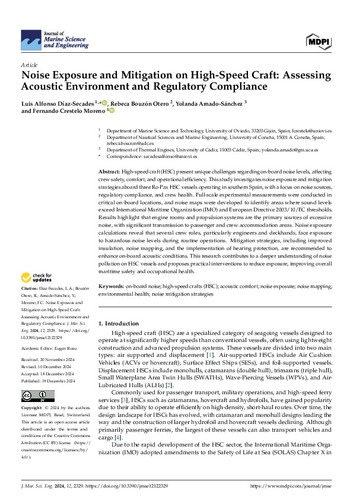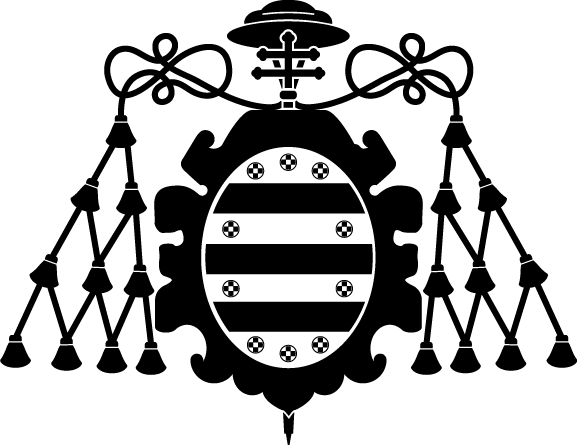Noise Exposure and Mitigation on High-Speed Craft: Assessing Acoustic Environment and Regulatory Compliance
Autor(es) y otros:
Palabra(s) clave:
Onboard Noise
High-speed Craft (HSC)
Acoustic Comfort
Noise Exposure
Noise Mapping
Environmental Health
Noise Mitigation Strategies
Fecha de publicación:
Editorial:
MDPI
Versión del editor:
Citación:
Resumen:
High-speed craft (HSC) present unique challenges regarding on-board noise levels, affecting crew safety, comfort, and operational efficiency. This study investigates noise exposure and mitigation strategies aboard three Ro-Pax HSC vessels operating in southern Spain, with a focus on noise sources, regulatory compliance, and crew health. Full-scale experimental measurements were conducted in critical on-board locations, and noise maps were developed to identify areas where sound levels exceed International Maritime Organization (IMO) and European Directive 2003/10/EC thresholds. Results highlight that engine rooms and propulsion systems are the primary sources of excessive noise, with significant transmission to passenger and crew accommodation areas. Noise exposure calculations reveal that several crew roles, particularly engineers and deckhands, face exposure to hazardous noise levels during routine operations. Mitigation strategies, including improved insulation, noise mapping, and the implementation of hearing protection, are recommended to enhance on-board acoustic conditions. This research contributes to a deeper understanding of noise pollution on HSC vessels and proposes practical interventions to reduce exposure, improving overall maritime safety and occupational health.
High-speed craft (HSC) present unique challenges regarding on-board noise levels, affecting crew safety, comfort, and operational efficiency. This study investigates noise exposure and mitigation strategies aboard three Ro-Pax HSC vessels operating in southern Spain, with a focus on noise sources, regulatory compliance, and crew health. Full-scale experimental measurements were conducted in critical on-board locations, and noise maps were developed to identify areas where sound levels exceed International Maritime Organization (IMO) and European Directive 2003/10/EC thresholds. Results highlight that engine rooms and propulsion systems are the primary sources of excessive noise, with significant transmission to passenger and crew accommodation areas. Noise exposure calculations reveal that several crew roles, particularly engineers and deckhands, face exposure to hazardous noise levels during routine operations. Mitigation strategies, including improved insulation, noise mapping, and the implementation of hearing protection, are recommended to enhance on-board acoustic conditions. This research contributes to a deeper understanding of noise pollution on HSC vessels and proposes practical interventions to reduce exposure, improving overall maritime safety and occupational health.
ISSN:
DOI:
Colecciones
- Artículos [37321]
- Ciencia y Tecnología Náutica [29]
Ficheros en el ítem





